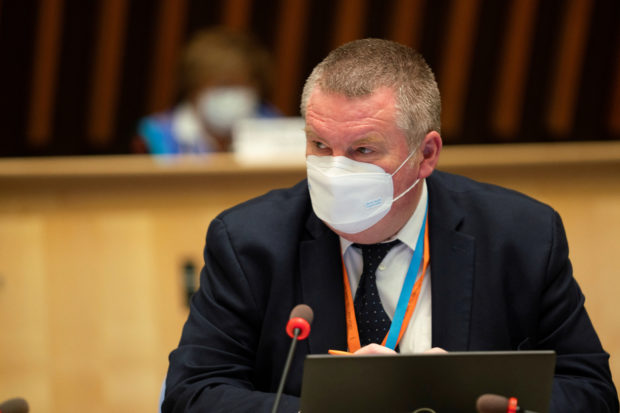
WHO Health Emergencies Programme Director Michael Ryan in Geneva, Switzerland, October 5, 2020. Christopher Black/WHO/Handout via REUTERS
GENEVA – The second year of the COVID-19 pandemic may be tougher than the first given how the new coronavirus is spreading, especially in the northern hemisphere as more infectious variants circulate, the World Health Organization (WHO) said on Wednesday.
“We are going into a second year of this, it could even be tougher given the transmission dynamics and some of the issues that we are seeing,” Mike Ryan, the WHO’s top emergencies official, said during an event on social media.
The worldwide death toll is approaching 2 million people since the pandemic began, with 91.5 million people infected.
The WHO, in its latest epidemiological update issued overnight, said after two weeks of fewer cases being reported, some five million new cases were reported last week, the likely result of a letdown of defences during the holiday season in which people – and the virus – came together.
A logo is pictured on the headquarters of the World Health Orgnaization (WHO) in Geneva, Switzerland, June 25, 2020. REUTERS/Denis Balibouse/File Photo
“Certainly in the northern hemisphere, particularly in Europe and North America we have seen that sort of perfect storm of the season – coldness, people going inside, increased social mixing and a combination of factors that have driven increased transmission in many, many countries,” Ryan said.
Maria Van Kerkhove, WHO’s technical lead for COVID-19, warned: “After the holidays, in some countries the situation will get a lot worse before it gets better.”
Amid growing fears of the more contagious coronavirus variant first detected in Britain but now entrenched worldwide, governments across Europe on Wednesday announced tighter, longer coronavirus restrictions.
That includes home-office requirements and store closures in Switzerland, an extended Italian COVID-19 state of emergency, and German efforts to further reduce contacts between people blamed for failed efforts, so far, to get the coronavirus under control.
“I worry that we will remain in this pattern of peak and trough and peak and trough, and we can do better,” Van Kerkhove said.
She called for maintaining physical distancing, adding: “The further, the better…but make sure that you keep that distance from people outside your immediate household.”